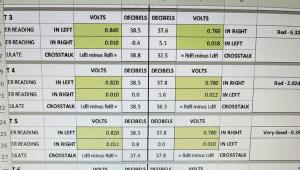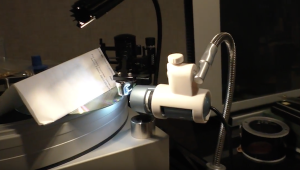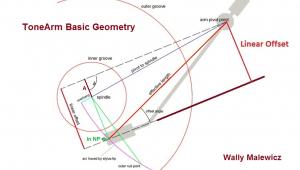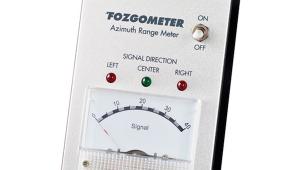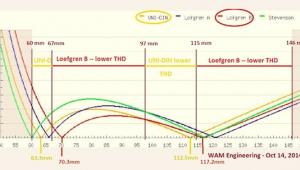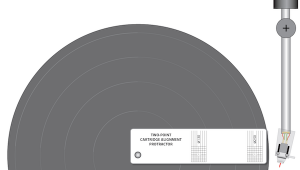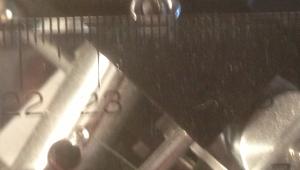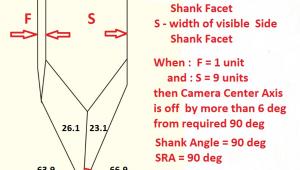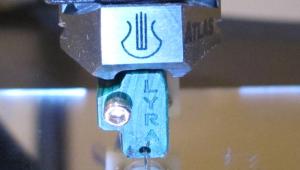A Turnbuckle In Time Saves Your Stylus
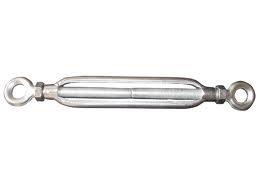
The large horizontal mass of the Eminent Technology II air bearing tonearm only intensified the problem. It was not a good playback environment for any stylus. Nothing I tried worked to limit the floor shaking, particularly at one location between the couch and turntable stand.
Then someone told me to try a turnbuckle or two and that solved the problem—as long as your stand is within a turnbuckle's distance from the wall behind it. Just wedge one turnbuckle between your stand's top shelf and the wall behind it, by turning the screws outward until you achieve a tight fit. Try a second on the other side of the stand but be careful not to wedge the second one in too tightly or the first one will fall down.
Getting both turnbuckles equally tensioned may take a few tries but it will be worth the effort because then you'll find the turnbuckles have mechanically grounded the stand to the wall behind it and the shaking and groove skipping will stop—at least until eventually the micro shaking will cause the turnbuckles to both slip and fall.


